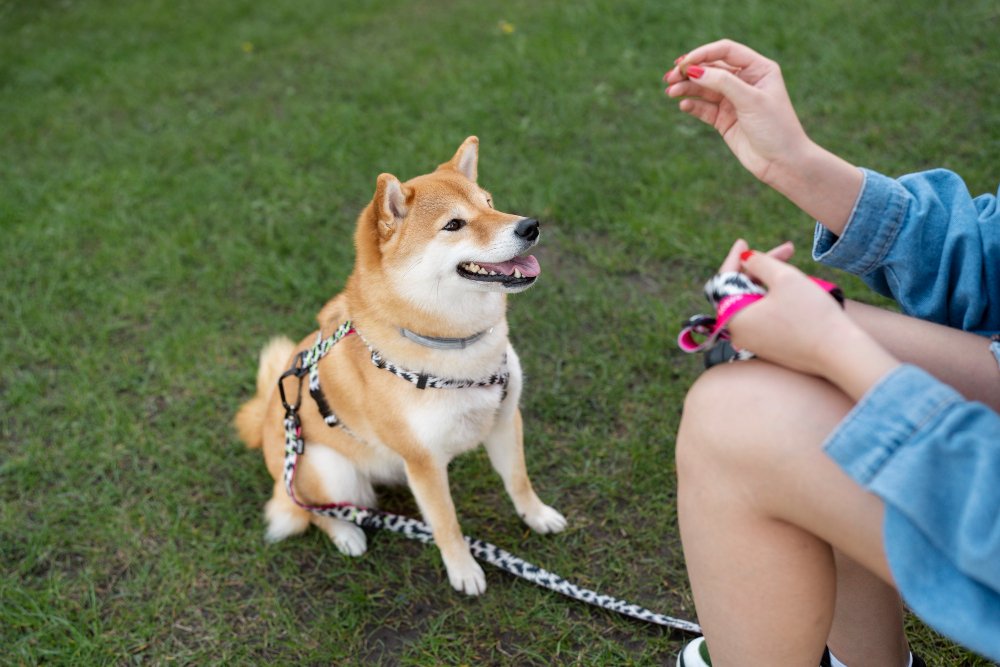Prong collars, also known as pinch collars, are a controversial dog training tool that consists of a series of metal links with prongs that face inward and apply pressure on the dog’s neck when pulled. Some dog owners and trainers swear by them, while others condemn them as cruel and inhumane. So, does a prong collar hurt my dog? The answer is not so simple.
In this blog post, I will debunk some common myths and misconceptions about prong collars, explain how to use them properly and safely, and discuss some alternatives that may suit your dog better.
Myth 1: Prong Collars Are Torture Devices
One of the most common arguments against prong collars is that they are torture devices that inflict pain and suffering on dogs. However, this is not true if the prong collar is used and fitted correctly.
A properly sized and adjusted prong collar should not cause any cuts, bruises, or injuries to the dog’s neck. It should also not cause any choking, coughing, or breathing difficulties.
The prong collar is designed to mimic the natural correction that a mother dog or a pack leader would give to a misbehaving pup, by applying a gentle but firm pressure around the neck.
The pressure is meant to be uncomfortable, but not painful, and to signal to the dog that its behavior is unacceptable. The pressure is also released as soon as the dog stops pulling or responds to the command, rewarding the dog for complying.
Myth #2: Prong Collars Are Only for Aggressive or Stubborn Dogs

Another common misconception is that prong collars are only suitable for aggressive or stubborn dogs that are hard to control or train. However, this is also not true. Prong collars can be used for any dog, regardless of its size, breed, temperament, or behavior. Prong collars are not meant to punish or intimidate dogs, but to teach them manners and obedience. Prong collars can help dogs learn how to walk nicely on a leash, how to stop jumping on people, how to come when called, and how to follow other basic commands. Prong collars can also help dogs overcome some behavioral issues, such as barking, digging, chasing, or escaping. Prong collars are not a magic solution, though. They still require consistent and positive training, and they should be used in conjunction with other methods, such as praise, treats, toys, and play.
Myth #3: Prong Collars Cause Psychological Damage to Dogs

A third common argument against prong collars is that they cause psychological damage to dogs, such as fear, anxiety, stress, aggression, or depression. However, this is also not true if the prong collar is used appropriately and humanely. A prong collar should not be used as a tool of abuse, dominance, or intimidation. It should not be used to hurt, scare, or bully the dog. It should not be used to correct every minor mistake or to constantly nag the dog. It should not be used to force the dog to do something it does not want to do or to suppress its natural instincts. A prong collar should be used as a tool of communication, guidance, and correction. It should be used to reinforce the bond and trust between the owner and the dog. It should be used to help the dog understand what is expected of it and to reward it for doing the right thing. It should be used to make the training experience fun and enjoyable for both the owner and the dog.
How to Use a Prong Collar Properly and Safely
If you decide to use a prong collar for your dog, you need to follow some basic rules and guidelines to ensure that you use it properly and safely. Here are some tips to help you:
– Choose the right size and type of prong collar for your dog. The prong collar should fit snugly around the dog’s neck, but not too tight or too loose. You should be able to fit two fingers between the collar and the dog’s neck. The prongs should be evenly spaced and should not dig into the dog’s skin. The prongs should also be smooth and rounded, not sharp or pointed. There are different sizes and types of prong collars available, depending on the dog’s size, coat, and sensitivity. You may need to try different options to find the best one for your dog.
– Attach the leash to the right ring on the prong collar. The prong collar should have two rings, one on each end of the chain. The leash should be attached to the ring that is opposite to the prongs, not the one that is next to them. This way, the prong collar will tighten and loosen as you pull and release the leash, creating clear and consistent feedback for the dog. If you attach the leash to the wrong ring, the prong collar will not work properly and may cause more harm than good.
– Use the prong collar only for training purposes, and only for short periods of time. The prong collar should not be used as a regular collar, and it should not be left on the dog when not in use. The prong collar should only be used for training sessions, and only for the duration of the session. The training session should not last more than 15 to 20 minutes, and it should be followed by a break and some positive reinforcement. The prong collar should be removed as soon as the training session is over, and replaced by a regular collar or a harness.
– Use the prong collar only for positive and gentle corrections, not for harsh or excessive ones. The prong collar should not be used to jerk, yank, or drag the dog. It should not be used to inflict pain or discomfort on the dog. It should not be used to correct every little mistake or to constantly nag the dog. The prong collar should be used to give a quick and gentle tug on the leash, followed by an immediate release, to get the dog’s attention and to signal that its behavior is not acceptable. The correction should be proportional to the dog’s behavior, and it should be accompanied by a verbal command or a cue. The correction should also be followed by praise, treats, toys, or play, to reward the dog for complying and to reinforce the desired behavior.
Alternatives to Prong Collars
If you are not comfortable with using a prong collar for your dog, or if you find that it does not work well for your dog, there are other alternatives that you can try. Some of the most common alternatives are:
– Flat collar: A flat collar is a simple and basic collar that goes around the dog’s neck and has a buckle or a snap closure. A flat collar can be used for everyday use, as well as for training purposes. A flat collar can help you control your dog and teach it basic commands, such as sit, stay, come, and heel. However, a flat collar may not be enough for some dogs, especially those that tend to pull or lunge on the leash. A flat collar may also cause choking, coughing, or tracheal damage if the dog pulls too hard or too often.
– Martingale collar: A martingale collar is a type of collar that has two loops, one that goes around the dog’s neck and one that connects to the leash. The martingale collar tightens when the dog pulls on the leash, but not to the point of choking or hurting the dog. The martingale collar is designed to prevent the dog from slipping out of the collar, which can be a problem for dogs with narrow heads or thick necks. A martingale collar can be a good option for dogs that need some extra control and guidance, but not as much as a prong collar. However, a martingale collar may still cause some discomfort or irritation to the dog’s neck if used incorrectly or excessively.
Headcollar: A head collar is a type of collar that goes around the dog’s muzzle and behind its ears. The head collar works by steering the dog’s head in the direction that you want it to go, rather than by pulling on its neck. The head collar can help you control your dog’s movements and attention, and prevent it from pulling, lunging, or jumping on the leash. A head collar can be a good option for dogs that are strong, energetic, or easily distracted, but not as much as a prong collar. However, a head collar may take some time and patience to get the dog used to, as some dogs may resist or try to remove it. A head collar may also cause some rubbing or chafing on the dog’s muzzle or ears if used incorrectly or excessively.
– Harness: A harness is a type of device that goes around the dog’s chest and back, and has a ring or a clip to attach the leash. The harness works by distributing the pressure from the leash across the dog’s body, rather than on its neck. The harness can help you control your dog’s movements and direction, and prevent it from pulling, lunging, or jumping on the leash. A harness can be a good option for dogs that are sensitive, nervous, or prone to injuries, but not as much as a prong collar. However, a harness may not be very effective for some dogs, especially those that are determined, stubborn, or have a high prey drive. A harness may also cause some rubbing or chafing on the dog’s chest or armpits if used incorrectly or excessively.
Conclusion
Prong collars are a controversial dog training tool that has both pros and cons. Whether you choose to use a prong collar for your dog or not, you should always do your research, consult a professional, and follow the best practices. Prong collars are not a substitute for proper training, and they should be used with care and respect. Prong collars are not the only option, and you may find that other alternatives work better for you and your dog. Ultimately, the goal is to have a happy, healthy, and well-behaved dog that you can enjoy and trust. I hope this blog post has helped you understand more about prong collars and how to use them. If you have any questions or comments, please feel free to leave them below. Thank you for reading!

